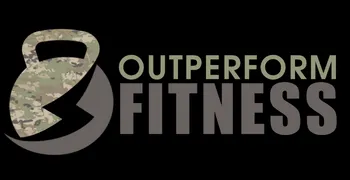Welcome to the Outperform blog page - your ultimate destination for discovering the secrets to unlocking your full potential in the realm of tactical professions. Whether you're striving to achieve your dream career or looking to elevate your fitness for better job performance, we've got you covered.
Article Topics:

Push-Up Progress Isn’t About Reps — It’s About Strength
Push-Up Progress Isn’t About Reps — It’s About Strength
If you're preparing for enlistment or basic training, chances are you've been told to “just do more push-ups.”
But if that’s all it took, you’d already be smashing out high numbers.
The reality? Push-up performance has less to do with endurance and far more to do with something called relative strength.
Whether you’re training for your PFA or aiming to stand out at basic training, understanding this one concept will change how you train — and help you see real, lasting progress.
Why Relative Strength Matters
Relative strength is your ability to produce force relative to your bodyweight.
Push-ups are a bodyweight movement — meaning every extra kilo you carry makes the exercise harder. Unlike lifting a fixed weight, you are the weight.
This means two things are critical:
Body composition: Carrying unnecessary body fat? You're working harder with every rep.
Strength in the right movement pattern: You need to be strong in a horizontal pushing pattern — the exact motion used in a push-up.
If one of these is off, your progress will stall. If both are off, you’ll stay stuck.
Why Just Doing More Push-Ups Doesn’t Work
Endless volume might seem like a good idea — but if you're not strong enough to move your own body through the full range of motion, you're only reinforcing poor form and wearing yourself down.
Push-ups require strength first, not just repetition.
You need the ability to generate enough force to lift your body from the bottom of the movement — especially under fatigue. That only comes from structured strength training.
The Role of Pressing Strength (and Why the Bench Press Works)
To develop the strength needed for push-ups, you need to strengthen the muscles that drive the movement:
Chest (pecs)
Shoulders (delts)
Triceps
One of the best tools to do this is the barbell bench press. Here’s why it’s so effective:
Movement match: It trains the same horizontal pushing pattern
Progressive overload: You can steadily increase resistance
Safe setup: Easier to control compared to dumbbells, especially for beginners
The stronger your bench relative to your bodyweight, the easier each push-up becomes. You use less energy per rep, fatigue slower, and perform more reps with better form.
What’s “Strong Enough” for Push-Ups?
Here’s a reliable benchmark to assess your readiness:
✅ 1 rep at 75% of your bodyweight on the bench press
✅ Or ~5 reps at 65–70%
These numbers indicate you’ve built the minimum strength needed to push yourself back up from full depth consistently.
Once you exceed this level, each push-up becomes a smaller percentage of your max strength — meaning you’ll experience less muscular fatigue per rep, and your total rep count goes up.
Two Strength Programs to Build Your Push-Up Base
You don’t need fancy equipment or complicated routines. What you need is structured, consistent strength training that targets your pressing muscles and allows for steady progression.
Here are two proven systems:
Option 1: Linear Strength Progression
This is ideal for beginners or anyone returning to training.
Cycle 1
3 sets of 5 reps
1-2 times per week
Start your first session using a weight you could bench for 10 reps (~65% 1RM). This allows progression each session rather than starting at, or close to your max.
Use the same weight across all sets
Add 2.5–5kg each session
Cycle 2
5 sets of 3 reps
1-2 times per week
Add 1.25–2.5kg each session
Progress to this once you begin failing reps in Cycle 1
Simple. Effective. And brutally consistent.
Option 2: Wendler 5/3/1 Method
This system is ideal for intermediate lifters or those who want a longer-term progression.
Start with 90% of your 1RM as your “training max” (TM):
Week 1: 3 sets of 5 reps @ 65/75/85% of your TM.
Week 2: 3 sets of 3 reps @ 70/80/90%
Week 3: 5/3/1 reps @ 75/85/95%
Week 4: Deload week (3x5 @ 60%)
At the end of the month, add 2.5kg to your training max and repeat the cycle.
Top sets each week should be performed as AMRAPs (as many reps as possible) to help push adaptation while staying within the structure.
E.g. For your 3rd set in week 1 at 85%, you should aim to do as many reps as possible even if it's well above the prescribed 5 reps.
Focus on the Right Metrics
If you’re serious about improving push-ups for the PFA or surviving the early weeks at Kapooka, shift your focus:
Train your pressing strength
Reduce excess weight that’s slowing you down
Use benchmarks to assess your readiness — not guesswork
Push-up capacity is a byproduct of smart strength work, not just high-rep punishment.
Train Like It Matters
Improving push-ups isn’t just about passing a test — it’s about building the kind of strength and endurance that will serve you in training, in the field, and on the job.
If you want a complete training system that builds the exact type of fitness the ADF is looking for — strength, muscular endurance, and resilience — check out the Fit For Service Training Plan.
It’s designed specifically for applicants and recruits preparing for service. No BS. Just results.
And if you’re after even more detailed breakdowns and support, this Push-Up Training Guide is a great place to dive deeper.
Next up: If you want the full picture of what to expect, read Surviving the PFA at Kapooka — a must-read for anyone heading to basic.
WANT TO GET
BATTLE READY?
Specialised online fit-prep program for ADF & First Responder applicants
Copyright Outperform Fitness © 2023.





